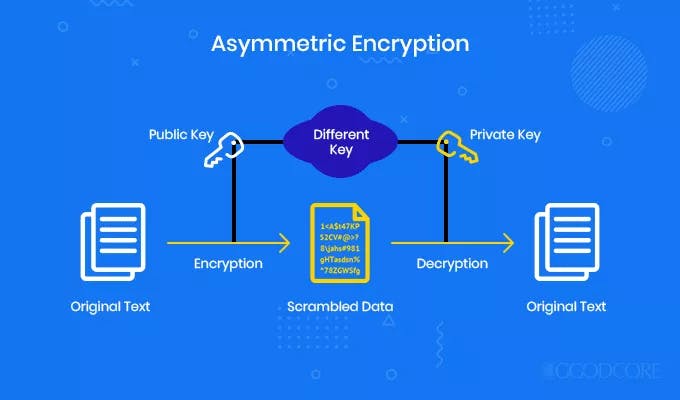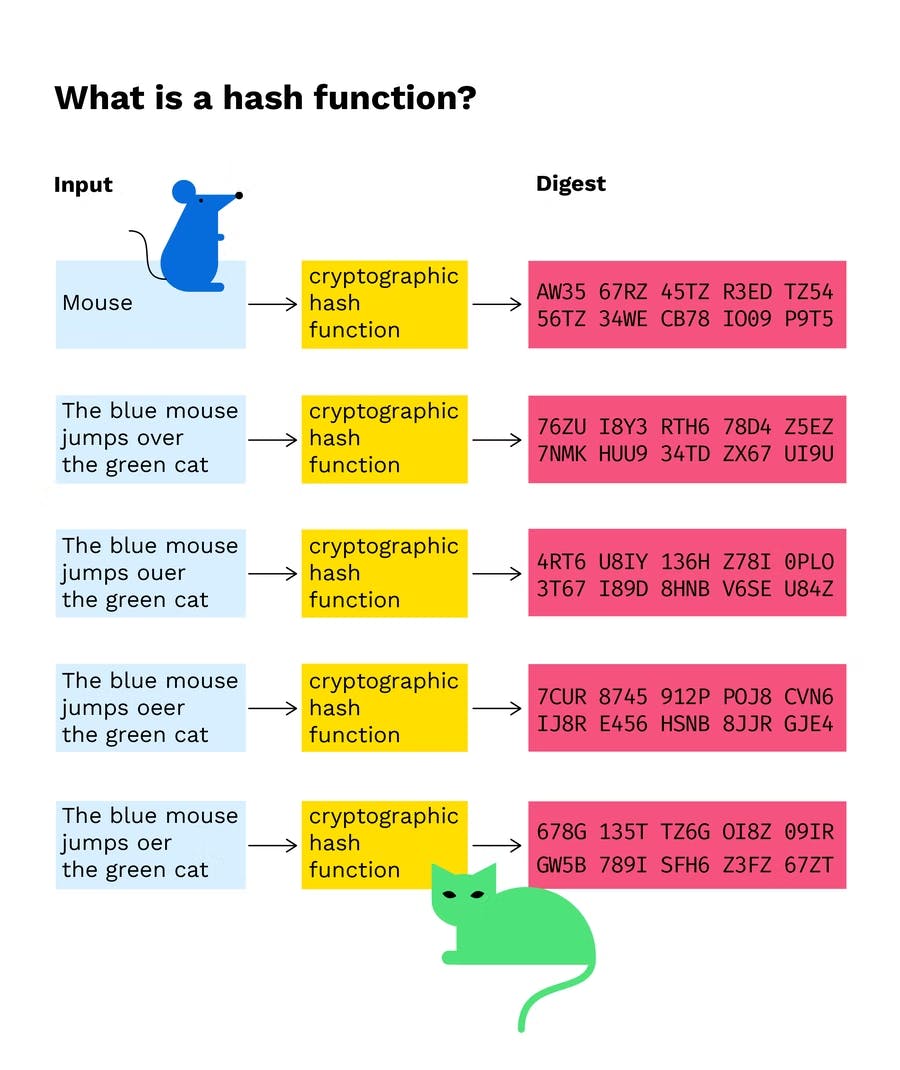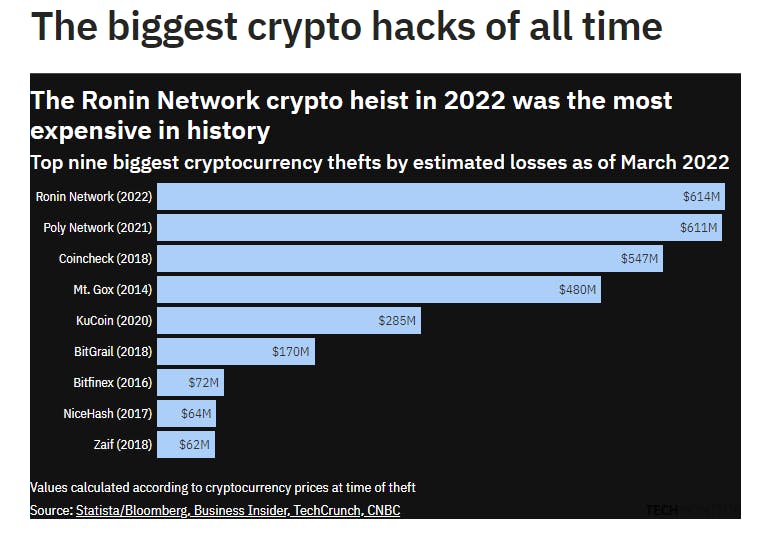HOW CRYPTOCURRENCY ACTUALLY WORK - Everything you need to know
A COMPLETE BEGINNERS GUIDE
The concept of Cryptocurrencies and the Blockchain is no doubt overwhelming. For the past month, I have dedicated myself to the study of these topics, and I can attest to this. Explaining one term leads to introducing more strange terms and a simple explanation ends up being compounded.
This is the reason cryptocurrency is hard to explain especially to beginners. In this article, I have broken it down into a beginner-friendly crash course, cryptocurrencies have a world of possibilities, If you've never considered investing in them, you might reconsider after reading this article.
Origin of Cryptocurrency
On the 31st of October 2008, Satoshi Nakamoto published a whitepaper containing his vision of the first cryptocurrency, the BITCOIN.

It’s okay if you don’t understand what Satoshi wrote, I didn’t understand it at first either. By the way, nobody knows who SATOSHI NAKAMOTO is; no one knows if it's a man, a woman, or a group of people, but I'll assume it's a man in this article.
On the 9th of January 2009, he released the bitcoin software on Sourceforge, a platform that manages open-source software. He made bitcoin an open-source software, which means anyone can contribute to it, the source code can be gotten on Github currently.
One thing was evident from what he wrote on his whitepaper: he wasn't okay with banks handling his transactions any longer, and he wanted to build a system that would allow him to send money to his buddies without going through the bank. This gave birth to cryptocurrency.
What is a Cryptocurrency
A cryptocurrency is a digital asset or digital form of money.

Cryptocurrencies are similar to regular currencies except that they're in digital form. If you check a physical money bill properly, you’ll notice they have unique serial numbers, cryptocurrencies are similar to these serial numbers.
Now, imagine you can tell someone that unique serial number without having to give them the physical money. That's what I mean when I say ‘’digital form of money’’. You should have seen pictures of cryptocurrencies as physical coins on. These pictures make a beautiful representation but a cryptocurrency is not a physical coin.

If you're to ask "what makes up a Cryptocurrency?", the answer would be "Nothing". You can’t call them a thing, they are just a string of letters and numbers that give them a unique identity just like serial numbers. If you used to think of cryptocurrency as a thing then you should probably change that.
What is Cryptography
Cryptocurrency makes use of a secure communication technique called cryptography… hence the prefix crypto in the word Cryptocurrency.
Cryptography is a common form of communication among criminals, spies, and hackers. When you want to send a message to someone and only want the person to understand the contents of that message, cryptography is what you use.
Cryptography involves encryption the process of turning plain text into ciphertext (unreadable text) and decryption the process of turning ciphertext into plain text. It is used to secure and verify transactions on a cryptocurrency network.
There are three main types of cryptography;
- Symmetric encryption cryptography
- Asymmetric encryption cryptography
- Hash functions
Symmetric encryption cryptography
Also known as Secret key cryptography, It's called secret key because it makes use of one secret key to encrypt and decrypt a message. Let’s say you want to send a message to a friend without allowing anyone to know the contents of the message except your friend.
You both meet and agree on the technique, a technique that involves encrypting a letter by shifting a number of places forward in the 24 alphabets and decrypting it by shifting the same number of places backward. You both agree to use +2 as the number which is also called a key.
- You write a plain message = "I love writeathons"
- You encrypt it using +2 as key ="K Nqxg ytkvgcvjqpu"
- You send the message to your friend
- Your friend decrypts it 2 steps backward = "I love writeathons"

Symmetric encryption illustration from teachcomputerscience.com
Asymmetric encryption cryptography
Also known as Public Key Cryptography, it's a more secure cryptographic system that makes use of two different keys, a public key that can be known by anyone for encryption and a private key that can only be known by you for decryption.
Unlike symmetric cryptography where you can just meet and agree on what the key would be, this cryptographic system generates its keys from something called an Asymmetric algorithm, these keys are different but are mathematically linked together.
Its works like this when you use it to send a message to a friend.
- You write a plain text = "I love writeathons"
- You encrypt it using your friend’s public key = 1adf8475ncm94rridi3r3c
- You send the encrypted message to your friend
- Your friend decrypts it using his private key = "I love writeathons"

Asymmetric encryption illustration from teachcomputerscience.com
Hash functions
Also known as Trapdoor functions, when you enter into a trap you can neither go backward nor forward, you can only stay the same way till you get saved. Hash functions work the same way except that there is no saving . It makes use of a hashing algorithm to convert plain text into something called a hash value.
When this algorithm receives input data, it converts it to a unique hash value, unlike the regular encryption-decryption cryptography, you can’t convert this hash value back to its original form again, it stays the same way, Hence the name Trapdoor.
One unique thing about hash functions is that no matter the size of input data it is given, it brings out the same length of the output. This means if you take the contents of a dictionary and a line of sentence and pass it both through a hashing algorithm it brings out the same length of data.

Hash functions from bitpanda.com
How Cryptocurrency Transactions Work
If you happen to have banks handle your transaction, you’d be provided with an account, to pay into that account you’ll make use of an account number then the bank charges you from time to time for making transactions.
Cryptocurrency makes use of cryptocurrency wallets instead of accounts and a cryptocurrency address that is generated from a public key acts as an account number. When you receive cryptocurrencies and want to access them you’ll need your private key, this is where public-key cryptography comes in.
Another unique thing about cryptocurrency is that instead of storing and verifying transactions in a bank it is stored and verified on a blockchain and these transactions can be viewed using a blockchain explorer.

The Blockchain
The blockchain is just a more secure system of storing information. This information could be about anything but usually, they are transactions. These transactions are bundled into blocks and these blocks are linked using cryptographic hash functions. Hence the word Blockchain.
Unlike banks that have a private database of information, the blockchain distributes its database to everyone connected to that network, this means anyone can see the transactions on a network at any point in time using a blockchain explorer. The blockchain also permits anyone to verify blocks of transactions, this process is called blockchain mining.
It is called mining because it is also the process by which new cryptocurrencies are produced, when someone verifies a block of transaction successfully they are given cryptocurrency coins as a reward. It is a process that requires a lot of computing power and electricity and this is one of the drawbacks of cryptocurrency.
A good example of how blockchain transactions work is Txstreet, a live transaction visualizer featuring Bitcoin and other cryptocurrencies, When a new transaction is broadcasted to a cryptocurrency network, a person appears and attempts to board a bus in real-time. If the transaction has a high enough fee, they will board the first bus and be ready to be included in the next mined block.

Types of Cryptocurrency
They are different varieties of cryptocurrencies, just as they are different types of traditional currencies, such as the Dollar, Pounds, Euros, and so on. One of the most distinctive features of cryptocurrencies is that each one is unique in terms of design and purpose. Some cryptocurrencies are not designed to be actually used for everyday transactions.
Broadly speaking there are two types of cryptocurrency:
- Coins
- Tokens
Coins
Cryptocurrency coins have their own native blockchain, this means that they have their own system of storing and verifying transactions. Creating a blockchain network usually requires a lot of resources to build and maintain, This explains why there are more tokens than coins.
Amongst these coins include;
- Bitcoin
- Ether
- Dogecoin
- Litecoin
- Binance coin
Tokens
On the other hand, Tokens use other networks' blockchains instead of creating a native blockchain that requires a lot of resources. Whenever these tokens make transactions, they pay transaction fees to the blockchain network, it's more like you renting an apartment and paying rent instead of buying it.
Amongst these Tokens include;
- Non Fungible Tokens (NFTs)
- Platform Tokens
- Security Tokens
- Transactional Tokens
- Utility Tokens
Benefits and Drawbacks
Dealing with cryptocurrencies has a lot of benefits, but it also has a lot of drawbacks as well. Here are some reasons why you should invest in this technology and the drawbacks it has.
Benefits
1. Value
The value of cryptocurrency depends on the specific one, Bitcoin, for example, has an economic profile similar to gold, only a small amount of bitcoin is produced every day and the number of bitcoins received when a block of transactions is mined is cut in half every four years.

Also, bitcoin has a maximum limit of 21 million, which means once the bitcoin in circulation reaches this limit, no bitcoins would be produced again, this time is estimated to be 120 years from now, which is one of the reasons the price of bitcoin rises every year as time gets close.
Ethereum on the other hand supports the building of applications and websites that can’t be shut down by anyone on its blockchain. When these apps and sites make transactions, they pay transaction fees to the Ethereum network, this makes Ethereum valuable as it’s becoming widely adopted.
2. Security
Security for cryptocurrencies also depends on the specific one, cryptocurrencies are not built the same way. Some are built to prioritize other things over security and this usually gives the hackers a chance to commit cryptocurrency hacks.

Cryptocurrency hacks from tech monitor
These hacks usually occur on cryptocurrency exchange platforms (A place to buy and sell crypto currency) and cryptocurrencies with a small ecosystem, usually, these hackers would try to gain access to half of the cryptocurrency network, if the network doesn’t have a lot of people connected to it the cryptocurrency hack would be a success.
Cryptocurrencies like bitcoin, ether, and lite coin have a very large ecosystem, this makes it difficult to hack, as computers all over the globe are constantly double-checking and verifying transactions. As I said earlier, security depends on the cryptocurrency, so, we can say that cryptocurrencies like bitcoin are very secure.
3. Privacy
When you wanted to open a bank account, you were required to provide details like your name, phone number, address, father’s name, and so on. You are usually required to provide as much information about yourself as possible.

For cryptocurrency, you are only required to generate an address for your cryptocurrency wallet, no name, no phone number, and all that disturbing information the bank usually ask of you. You can make transactions without anyone knowing who you are or where you are from. Absolute privacy.
Drawbacks
1. Volatility
Unlike regular currencies that are backed up by the government, the value of cryptocurrency is driven by supply and demand, government regulations, and media hype. This has caused a lot of people to become millionaires overnight and also caused some others to go bankrupt.

For example, when the Chinese government announced in the year 2021 that cryptocurrency transactions were illegal, Minning farms were shut down in the country and this caused the prices of cryptocurrency to drop.
Dogecoin's story is a perfect example of how media hype affects the price of cryptocurrencies. It started like every normal cryptocurrency start-up until the 20th of December 2020 when Elon Musk tweeted one-word “Doge”, shortly after, the value rose by 20%.
Elon musk continued making dogecoin-related tweets, this caused its value to rise by another 40%. Today dogecoin is the 12th most valuable coin in the world with a market capitalization of $16,984,477,946.
2. Acceptance
Most governments haven't figured out how to handle cryptocurrency yet, maybe it's because of its volatility or because they can’t put it under their control like traditional currencies, I don’t know. But they usually either ban it or make regulatory changes that affect the price in a lot of ways.

Coupled with the fact that it’s a new technology and people are resistant to change. On the 21st of May 2021, Tesla made an announcement that it would start accepting bitcoin as a form of payment then on the 12th of May they changed their mind.
3. Environmental Impact
I mentioned earlier that cryptocurrency mining consumes a lot of computing power and electricity, which has a huge impact on the environment. As more computers join a cryptocurrency network to verify transactions, more electricity production is required.

In the US, Bitcoin mining creates an estimated 40 billion pounds of carbon dioxide emissions. I am not very proficient in chemistry but I know carbon dioxide to be a dangerous chemical to living things, just imagine the effect of 40 billion pounds of it on the environment.
Conclusion
Cryptocurrency is a vast subject; everything you've read is only the tip of the iceberg; as I stated at the outset, this is merely a crash course. There's a lot more to it. There's a popular slang phrase that goes like this: "DYOR" (Do your own research).
I couldn't delve too deeply into some concepts for fear of making them difficult to grasp. If you want to learn more about crypto, the hashnode web3 blog is a wonderful place to start. It has a handpicked team of exceptional web3 authors, so you should be fine to go from there.
So this is where I stop typing🙂; I'm a software engineer and a web3 enthusiast who is passionate about the possibilities that cryptocurrencies are creating in this age. In my next posts, I'll go over some more advanced concepts concerning cryptocurrencies and web3. On Twitter, I'd like to connect with more techies.
Please leave a comment and consider buying me a coffee if you found this article useful. #WAGMI🚀

